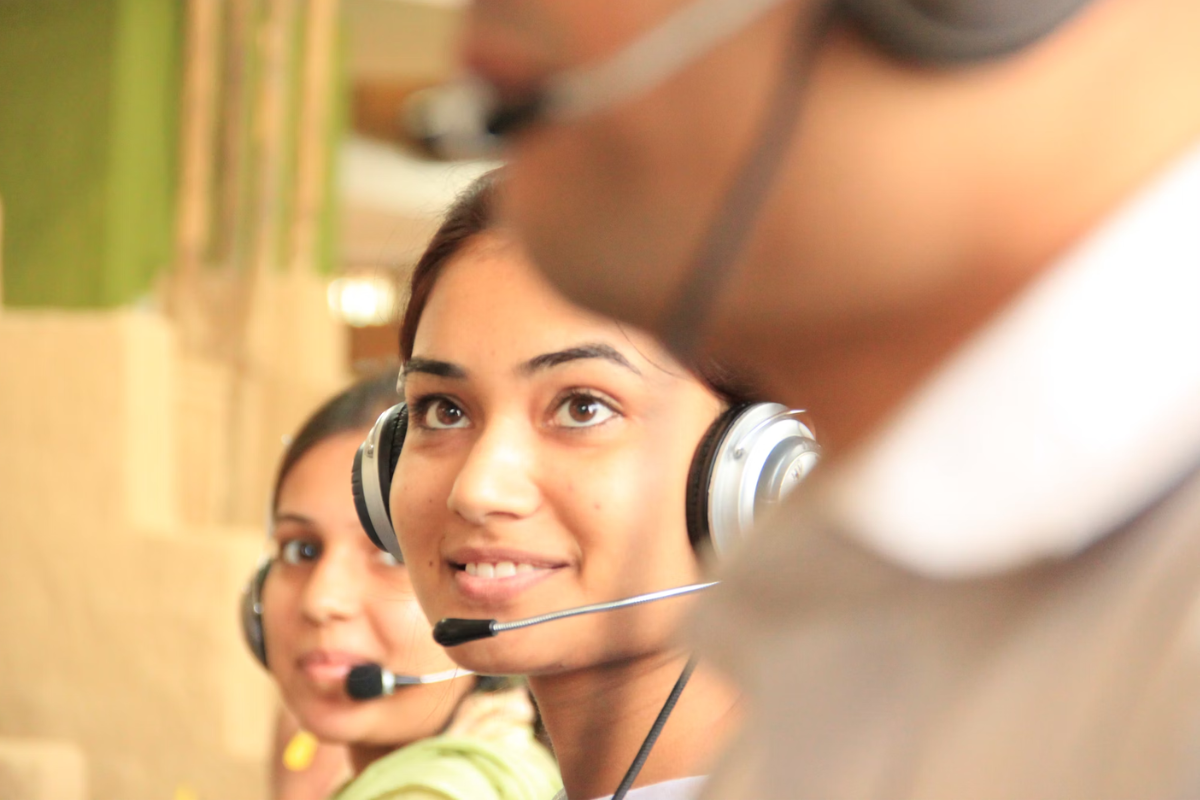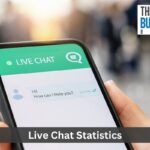Cold calling is a sales method where salespeople call potential customers who haven’t expressed any interest in their products or services.
It’s one of the most common and oldest sales practices, but it’s also the most challenging.
We have gathered some cold calling statistics (and success rates) that will be helpful to salespeople who engage in the cold calling technique to get new business.
Statistics can provide insights into how to boost success rates from cold calling.
It’s important to note that the following statistics are merely averages since the precise success rate of a cold calling campaign relies on various factors like the industry in which the salesperson in, the quality of the salesperson’s sales pitch, and the target audience.
Despite the challenges of the cold calling sales technique, it can be a productive and effective method for lead generation and even to close sales.
Recently, one source reported that 69% of buyers have accepted one or more cold calls from sales representatives in the past 12 months.
We have more statistics for you about cold calling and the success rates of cold calling, so let’s get into this.
Post Contents
- 1 Key Statistics
- 2 Cold Calling Statistics (and Success Rates)
- 2.1 1. On average, cold calling offers a 2% success rate.
- 2.2 2. 41.2% of sales professionals say that phones are their most effective sales tool.
- 2.3 3. 52 is the average number of cold calls a salesperson makes per day.
- 2.4 4. Each cold call should be under 5 minutes long.
- 2.5 5. Wednesday is considered “prime” day for making cold calls.
- 2.6 6. 57% of B2B “chief” level executives favor phone contact over other forms of communication.
- 2.7 7. In 2021, an average of 33 daily cold calls were made by sales representatives.
- 2.8 8. 90% of first contact voicemail cold calls are never returned.
- 2.9 9. Asking a prospect, “How have you been?” during a cold call can boost its success rate by 6.6 times.
- 2.10 10. On average, successful cold calls take just over two minutes longer than unsuccessful calls.
- 2.11 11. 54% of Technology buyers prefer cold calls.
- 2.12 12. It takes an average of 8 cold calling attempts to reach a prospect.
- 2.13 13. 28% of completed cold calls are categorized as productive.
- 2.14 14. Opening a cold call with, “Did I catch you at a bad time?” results in 40% less chance of booking a meeting.
- 2.15 15. 1 o’clock in the afternoon is the worst time to make cold calls.
- 2.16 16. 94% of cold calls from unknown numbers go directly to voicemail.
- 2.17 17. Companies that think cold calling is dead experience 42% less growth over those who use cold calling.
- 2.18 18. 92% of all customer engagements occur on the phone.
- 2.19 19. Sales representatives who say why they’re calling are 2.1 times more successful.
- 2.20 20. Using the term “we” often during a cold call improves success rates.
- 3 FAQs
- 3.1 What’s the average cold calling success rate?
- 3.2 When are the best times to make cold calls?
- 3.3 How many times should a salesperson follow up with a prospect?
- 3.4 How can salespeople improve their cold calling success rates?
- 3.5 What are some objections to overcome during a cold call and how do you handle them?
- 4 Conclusion
Key Statistics
- On average, cold calling offers a 2% success rate.
- 41.2% of sales professionals say that phones are their most effective sales tool.
- 52 is the average number of cold calls a salesperson makes per day.
- Each cold call should be under 5 minutes long.
- Wednesday is considered “prime” day for making cold calls.
- 57% of B2B “chief” level executives favor phone contact over other forms of communication.
- In 2021, an average of 33 daily cold calls were made by sales representatives.
- 90% of first contact voicemail cold calls are never returned.
- Asking a prospect, “How have you been?” during a cold call can boost its success rate by 6.6 times.
- On average, successful cold calls take just over two minutes longer than unsuccessful calls.
Cold Calling Statistics (and Success Rates)
1. On average, cold calling offers a 2% success rate.

Every salesperson in every industry where cold calling is used as a sales technique needs to know that the average rate of success for this sales method is 2%.
This is known as the conversion rate since you are converting someone from a cold call compared to a warm or hot lead.
(Marketing for Success, Zippia)
2. 41.2% of sales professionals say that phones are their most effective sales tool.
In one survey, 41.2% of sales professionals said that the phone is their most effective sales tool.
While this statistic may seem surprising, it did come from a study of sales professionals across multiple industries.
This statistic may be one of the most accurate possible for this market.
(FinancesOnline, Sales Insights Lab)
3. 52 is the average number of cold calls a salesperson makes per day.
In general, salespeople make 52 cold calls per day on average.
Additionally, top sellers say it takes an average of 6 hours to research prospects.
Data shows that 63% of sales professionals say the least favorite sales technique is cold calling.
Plus. 80% of cold calls go straight to voicemail on the initial attempt.
(Smith.ai)
4. Each cold call should be under 5 minutes long.
Cold calling has been deeply researched over the years with very few aspects changing since data has been revealed.
One of these statistics show that a cold call should last under 5 minutes, 4 minutes and 50 seconds to be precise.
(Klenty Blog)
5. Wednesday is considered “prime” day for making cold calls.

Analytical data shows that Wednesday is the prime day for making cold calls in terms of a prospect answering their phone.
In fact, Wednesday is the day when employees are focused on work and are mostly apt to be at their workstation.
So, if you want to speak with a prospect, Wednesday is the best day for conversations.
(Call Hippo, Fit Small Business)
6. 57% of B2B “chief” level executives favor phone contact over other forms of communication.
In terms of B2B selling to C-level executives, 57% said they prefer to be called on the phone, according to cold calling polls/surveys.
This figure is highest among managers (47%) and directors who prefer phone calls (51%).
Also, sales professionals say they reach high-level executives on the first cold call compared to managers or directors of a business.
(Zippia)
7. In 2021, an average of 33 daily cold calls were made by sales representatives.
In terms of how many cold calls per day, a 2021 survey revealed that an average of 33 cold calls per day were made by salespeople.
According to our sources, this is down from numbers in 2012 for cold calling where 33 cold call dials were made per day on average.
(FinancesOnline, For Entrepreneurs)
8. 90% of first contact voicemail cold calls are never returned.
HubSpot revealed that a whopping 90% of all first contact cold call voicemails are never returned.
This should come as no surprise in the sales world today.
It’s believed to be due to lengthy or ineffective messages from sales agents, especially in the insurance realm where cold calling is essential.
(Smith.ai)
9. Asking a prospect, “How have you been?” during a cold call can boost its success rate by 6.6 times.
Sometimes it is what you say that builds a relationship.
Data shows that you can boost your cold calling success rate by 6.6 times simply by asking the prospect, “How have you been?”.
The analysis showed that sales agents who asked this question experienced a boost in their cold calling success rate.
After all, that is a personable question.
(Klenty Blog)
10. On average, successful cold calls take just over two minutes longer than unsuccessful calls.

It stands to reason that a successful cold call lasts longer than an unsuccessful cold call.
The average length of a successful cold call is two minutes longer than an unsuccessful one.
On average, a successful cold call has a length of 5 minutes and 50 seconds.
This is in contrast to the 3 minutes and 14 seconds of an unsuccessful cold call.
After all, sales agents don’t like to waste time.
(Fit Small Business)
11. 54% of Technology buyers prefer cold calls.
While you wouldn’t think anyone would prefer a cold call, data shows that 54% of those who buy technology prefer cold calls.
Overall, 49% of all buyers favor cold calls over other methods of sales contact.
In terms of those who buy financial services, 40% prefer cold calls.
(Zippia)
12. It takes an average of 8 cold calling attempts to reach a prospect.
In 2020, The Brevet Group reported that it takes an average of 8 cold calling attempts to reach a prospect.
This statistic reminds salespeople to be persistent about making cold calls because it can take a few attempts to reach a prospective customer/client.
(FinancesOnline)
13. 28% of completed cold calls are categorized as productive.
When sales representatives make cold calls, they also categorize them.
Data shows that 28% of the time completed cold calls are considered and categorized productive.
This statistic could be categorized as a pro or a con depending on how you look at it.
(Smith.ai)
14. Opening a cold call with, “Did I catch you at a bad time?” results in 40% less chance of booking a meeting.
In terms of getting meetings booked, sales agents are 40% less apt to book a meeting if they open a cold call with, “Did I catch you at a bad time?”.
While asking a cold call prospect how they have been may increase your cold calling success, asking if you’ve caught them at a bad time produces the opposite result.
(Klenty Blog)
15. 1 o’clock in the afternoon is the worst time to make cold calls.

According to research, the worst time of the day (regardless of the day) to make a cold call is at 1 o’clock in the afternoon (1 p.m.).
The peak time is about 9 a.m., but then another peak doesn’t come around until after 4 o’clock in the afternoon.
Also, it’s not recommended for salespeople to make cold calls after business hours.
(Fit Small Business)
16. 94% of cold calls from unknown numbers go directly to voicemail.
These days, people tend to screen their phone calls.
In fact, 94% of phone calls from unknown numbers are left to go to voicemail, according to 2020 statistics about cold calling.
In 2014, this figure was 80%, so more people let unknown callers go to voicemail.
As a salesperson, this means you need to leave well-thought-out voice messages.
(Zippia)
17. Companies that think cold calling is dead experience 42% less growth over those who use cold calling.
According to the book Sales Engagement by Medina, M., Altschuler, M, and Kosoglow, M., organizations that believe cold calling is dead or an ineffective sales technique experienced 42% less growth compared to companies that embrace cold calling.
(FinancesOnline)
18. 92% of all customer engagements occur on the phone.
According to a Salesforce study, 92% of all customer interactions still occur over the phone.
As we keep hearing people claim that cold calling is dead, we see statistics like this, and we see things from a different perspective.
Does this data give you another perspective of the effectiveness of the cold calling technique?
(Salesforce, Smith.ai, The Brevet Group)
19. Sales representatives who say why they’re calling are 2.1 times more successful.
Sales representatives who tell the potential customer why they are calling during a cold call are 2.1 times more likely to get an appointment.
By starting the cold call with why you’re calling, you proactively overcome many objections of prospects.
(Klenty Blog)
20. Using the term “we” often during a cold call improves success rates.

The most successful sales representatives say that using “we” during cold calls generates 1.84 successful phones calls compared to 1.11 unsuccessful phone calls where the word “I” is used more.
As a salesperson, if you’re not saying “we” more than “I” in your cold calls, you may be missing several prospective closed sales or appointments.
(Fit Small Business)
FAQs
What’s the average cold calling success rate?
Data shows that the average cold calling success rate is 2%.
So, for every 100 calls you make, you can expect to close 2 deals.
When are the best times to make cold calls?
Since this is a tried-and-true sales technique, salespeople have learned when to make these calls to get the most from them.
According to sales professionals, the best times to make cold calls include:
11 am to 12 pm and 4 pm to 5 pm on Tuesdays, Wednesdays, and Thursdays.
These are known to be when people are most likely to be near their phones and have the time to speak with a sales representative.
How many times should a salesperson follow up with a prospect?
Most prospects will need to be called multiple times before they are ready to make a purchase.
The average number of follow-up calls comes to 8 per prospect.
How can salespeople improve their cold calling success rates?
We found some good tips for salespeople that can help their success rates from cold calling:
1. Do your research before you call a prospect. Be sure to learn as much as you can about them and their company. This is how you appropriately customize your sales pitch and answer their questions.
2. Be prepared and have your script ready. Avoid sounding robotic by practicing your sales pitch multiple times so it sounds naturally conversational and not scripted.
3. Be persistent and don’t give up after a single call.
4. Be professional, polite, and respectful regardless of how the prospect responds to you. It’s not personal.
What are some objections to overcome during a cold call and how do you handle them?
It’s normal to hear objections during cold call.
Here are some common objections and things you can say to overcome them:
1. “I’m not interested.”
2. “I’m too busy.”
3. “I’m not looking for what you’re offering.”
4. “I’ already working with someone else.”
You can handle these objections by giving the potential customer clear and concise responses.
For instance, when they say they aren’t interested you can ask if they are open to hearing more about the product/service and how it may help them.
When they say they’re too busy, try offering to call them back at a time that’s more convenient to them and be sure to get that time set on that call.
The goal of cold calling isn’t to close a deal on the spot, but to start a conversation and learn more about a prospect’s needs.
If you’re doing that, you are on your way to building a good relationship that could result in closing the deal in the future.
Conclusion
If you’re a salesperson who is tasked with making cold calls, keep these statistics nearby and use them as needed before, during, and after cold calls.
It could make the difference between closing a deal or losing a prospect.
If you’re a sales agent that makes cold calls, how are you doing with your success rates?
If you’re not feeling confident about your cold calling success, refer to these statistics to see if something in them can help you improve.
We hope you have learned something new and helpful from these cold calling statistics (and success rates).
That’s our goal and what we strive to do for our readers.






























